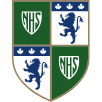When Norfolk House School moved to the Pemberton Woods site in 1932, it was originally planned that a building, in addition to what became known as Main House, would also be constructed to house students for boarding purposes. Fifty feet west of Main, where the Atkins building now stands, was the planned construction – it never happened. A year prior to the move, the boarding house on Transit had accommodated up to sixteen girls, but it was now deemed too far away from PW to serve the school properly and a closer alternative was sought. [In the following year, that house on Transit became the first school building of the newly started Glenlyon School]. But before looking at the boarding decision in 1932, let us take a step back to review boarding at NHS before the PW move.
Within a year of starting in 1913, NHS moved from 1164 Oscar Street into slightly larger premises at 1950 Granite Street, providing accommodation for the founders, Julia McDermott and Dora Atkins, upstairs while classes were held in the rooms below. In 1917, Miss McDermott married and left the school to Miss Atkins. It was then shortly after the conclusion of WWI that a young student, Trudi Green, was left in Victoria while her mother, a concert pianist, went on tour to Europe. Trudi became NHS’s first boarder, staying in the same bedroom as Miss Atkins, which must have been an uncomfortable solution for them both!
By 1920, the school slowly recovered from the repressions of wartime and enrolment increased. More classroom space was urgently needed and a rented property across the road at 1052 Amphion Street could also serve as a boarding house when needed. Further increases in enrolment, partly due to troubles in China and the need for sanctuary for several British subjects, forced the acquisition of another property solely as a boarding house. In 1926, Miss Atkins leased the property at 1390 St. James’ Street which was renamed Transit in 1929. It served as accommodation for Miss Atkins and senior teacher Miss Riach as well as being NHS’ first dedicated boarding house. (The Amphion Street property was no longer needed, as the upstairs rooms in the Granite Street house could now be used as classrooms). However, by the late 1920s, the widening reputation of the school meant increasing enrolment and consequently a need for further classroom space. 940 Foul Bay Road became a stopgap for the problem, but administering three properties, with the higher costs and difficult efficiency of movement forced the need to try and find somewhere that provided the whole operation under one roof. Hence, the move to Pemberton Woods. But by not constructing a boarding facility, it left that problem still to be resolved.
Miss Atkins found the answer at “Gonzales,” near the junction of St. Charles Street and Rockland. Previously the site of Sefton College, which moved and would later fold in 1938, the house belonged to another branch of the Pemberton family. It was rented for $85/month, boarded NHS girls at the start of the 1931 fall term and remained the boarding house until 1952. Its twenty rooms housed both girl boarders, Miss Atkins and three or four other staff members.
Here is an excerpt from a young boarder’s account while staying at “Gonzalez”:
“I remember the rooms panelled in dark wood and the staircase which led up to the bedrooms. How I longed to slide down that banister! The dormitory I slept in was shared with eight other girls. We had our own iron bed with springs which groaned with every move. You had to take everything off your bed each morning and turn the mattress. Only one bath a week was allowed. Mrs. Cheetham used to heat up one kettle at a time for our bath and we only had two inches of water in a very large tub.
The upstairs housed the older girls and a mysterious staircase led to the turret. No one was allowed through the door at the top. The older girls used to tell us younger ones that Miss Atkins and Mrs. Cheetham had a torture chamber up there which was used when someone was very, very bad.
A gong announced mealtimes and breakfast was always the same: toast and dark, bitter porridge. Lunch, at which we were joined by many of the day students, was totally predictable: Monday-roast beef; Tuesday-cold beef; Wednesday-minced beef; Thursday-stew; Friday-fish. Vegetables were always potatoes, carrots and boiled cabbage. There were treats on Sunday, a boiled egg for breakfast and treacle pudding for lunch dessert.
On the weekends we often took a walk to Oak Bay beach or the Government House gardens. The best treat was to catch a bus to the Crystal Gardens Pool for swimming lessons. We would wear funny 1920s style bathing costumes, which we received as part of our rental fee.”
All was well until 1951 when the City condemned the building because it was in the way of updated planning for Montgomery Street. This caused great consternation and coincided with internal concerns over the future of the school. After a period of six difficult years that concluded in the retirement of Miss Atkins and Mrs. Cheetham, and largely due to the leadership of Board chair, Hugh Henderson, Winifred Scott joined NHS as headmistress. NHS was revived together with its boarding capabilities after a generous offer from Mrs. Massy Goolden, formerly Nelles, of her former family home at 620 St. Charles Street. After some rezoning issues, it remained the NHS boarding house until June 1965, when it was decided to operate as a day school only. From the proceeds of the sale of the boarding house, the school purchased 780 Richmond as the Headmistress’ house and the remainder went to funding the future construction of the Henderson building, hence nearly fifty years of boarding at NHS came to an end.






